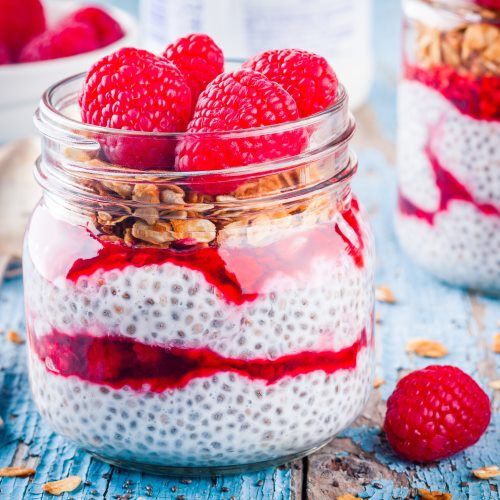There are sugars, and then there are sugars
Fructose, in the form of fructose, fructose-glucose or glucose-fructose syrup, is added to the majority of foods, such as cookies, candies, beverages, cold meats and bread. This means it is consumed extensively. Scientists warn that too much fructose in an improperly balanced diet can cause obesity, a fatty liver and hypertension. This, in turn, increases blood cholesterol and enhances the risk of cardiac diseases. Sante consciously abandons syrups that contain fructose, and replaces them with glucose syrup which, although more expensive, is much more valuable, owing to the numerous beneficial effects of glucose.
Glucose and fructose. They look alike, but they have such different effects!
Both glucose and fructose are simple sugars. Glucose is known as “grape sugar”, as it is mainly found in grape juice. Glucose content in fruit in vegetables is the highest when they are ripe, and gradually drops during storage. Glucose is an ingredient of sucrose, i.e. the common sugar that we usually use to sweeten beverages. Fructose is called “fruit sugar”, as it naturally occurs in fruit (plus in honey and nectar). Although pure glucose and fructose look alike, their chemical structures differ. Fructose is sweeter than glucose, but the consequences for the body of the differences between these two reach far beyond the mere taste values. Glucose is immediately transformed into energy and satisfies the feeling of hunger, while fructose is stored as fatty tissue and increases the appetite for sweets. How come?
Fructose and growing cravings
Scientists from the University of Southern California proved that the brain reacts to glucose and to fructose in very different ways. Revolutionary research led by doctor Kathleen Page from the Psychology Department showed that drinking a beverage sweetened with fructose leads to sudden activation of the accumbens nucleus, which drives the desire for food. The process was much milder if glucose drinks were consumed. Participants of the experiment reported that after drinking a fructose drink they were hungrier than after drinking a glucose product. Additionally, the researchers discovered that the growth of blood fructose does not inhibit the activity of the hypothalamus which is responsible for the feeling of hunger and satiety. What fructose does, in fact, is make you hungry. Eating fructose triggers a reaction that leads to overeating, as the brain keeps calling for more sweetness. Additionally, the concentration of leptin, a “satiety hormone” that kills appetite, drops with the concurrent growth of ghrelin, the “hunger hormone”. The low level of leptin, combined with high ghrelin, cause uncontrollable appetite. Increased blood glucose suppresses the activity of the areas in the hypothalamus that are responsible for the feeling of hunger, which makes us feel full. Both neurological and behavioural reactions confirm that fructose is a stronger appetite trigger than glucose. In the opinion of doctor Mirosław Mastej, glucose leaves you feeling full for about 2 to 3 hours, while fructose does not provoke the feeling of satiety at all.
Glucose, energy for the brain
Glucose is the most important source of energy for the brain and the neurons, and conditions the proper functioning of the nervous system. In the process of glucose metabolism, a high-energy compound is produced, called ATP. The growth of ATP concentration informs the body that energy has been accumulated. This type of energy is available immediately. Glucose can be stored in the liver and in muscles as glycogen. Glycogen is a chemical compound, readily convertible into energy for use by the brain as a “fuel” and as an energy source for the muscles.
Fructose, the cause of obesity
Things are different with fructose, which cannot be transformed into glycogen in the liver. The liver takes up fructose and transforms the excess amounts into triglycerides, which are then stored in the form of fatty tissue. The process is a quick one, as the body will do all it can to prevent the process of protein glycation (which impairs protein function). Furthermore, fructose is absorbed from the digestive tract much more slowly than glucose and must be transformed into glucose to be used in the process of ATP production. Unlike glucose, which immediately gives you energy, fructose is totally useless during physical activity. Only 0.5 kcal of the 120 kcal that glucose has is transformed into fat, while in the case of fructose, this amount is as much as 40 kcal (which is 80 times more!).
Fatty liver and higher blood cholesterol
Excess fructose consumption leads to growing VLDL concentration (Very Low-Density Lipoproteins), which transport fat from the liver into fatty tissue. Plus, it stimulates the production of free fatty acids and triglycerides, which accumulate in the liver. This can cause fatty liver and abdominal obesity. A study conducted in monkeys at Wake Forest Baptist Medical Centre showed that animals on a fructose-rich diet much more frequently suffered from liver damage. The results were published in the pages of the “American Journal of Clinical Nutrition”. The free fatty acids produced in the process of fructose metabolism in the liver cause insulin resistance. Too much fructose in the diet leads to increased blood triglycerides and atherosclerotic plaque formation. An experiment conducted by researchers from the University of California proved that blood cholesterol and triglycerides grew in subjects fed for two weeks with high-fructose maize syrup. Other research, referred to by doctor Robert H. Lustig, a professor in paediatrics who specialises in obesity treatments, showed that blood triglycerides doubled in students fed for 6 days with fructose-rich products, with a five-time growth of fat levels. Yet another study reported that excess fructose favours hypertension.
Fibre, the missing link
The above-mentioned studies are only seemingly contradictory to the recommendations of dieticians to eat plenty of fruit and vegetables which do contain fructose. Besides, we have all heard about the positive effects of purifying fruit diets. How is this possible? You can load your diet with fruit without worry. Nature is wise, so it has a protection against the destructive effects of eating fructose. It is fibre, which naturally occurs in vegetables and fruit. By eating vegetables and fruit, we provide our body with only a little fructose and quite a lot of fibre. Fibre reduces the absorption of carbohydrates and certain free fatty acids from the digestive tract, thus reducing blood insulin. As it makes us feel full faster and for longer, with fibre we eat less and not so frequently. The proportion between fructose and fibre is not disturbed, as happens when you eat much highly-processed food. Technological progress, which makes it possible to “improve” food and reduce the costs of its production, has a dark side, too. The recipe for good health and well-being is a well-balanced diet based on natural products rich in nutrients. Such a diet satisfies the individual nutritional needs of each and every organism, depending on its health condition. The appropriate selection of foods supports the proper functioning of the body, without the risk of deficiencies or excess amounts of individual nutrients.
Glucose syrup in Sante products
Some products by Sante contain only glucose syrup. The label of such products reads “glucose syrup”, which is not to conceal from the customer the information that the product has sugar added, but to reliably inform the consumer of the factual content of the product, in accordance with Regulation No. 1169/2011 of the European Parliament and of the Council on the Provision of Food Information to Consumers (…). Most glucose syrups usually contain 3 to 5% of fructose, but Sante uses syrups which do not contain fructose at all. This sweetener is much more beneficial to people than sugar (ca. 50% fructose / 50% glucose) or the glucose-fructose syrup, once used by Sante (ca. 70% glucose / 22% fructose). Sante purposefully abandons syrups that contain fructose, and replaces them with glucose syrup which, although more expensive, is much more valuable, given the above-mentioned unfavourable effects of fructose and the numerous beneficial effects of glucose.
Sugar or sugars?
The labels of food products contain a table of nutrients with information reading “carbohydrates, of which sugars”. The term “sugars” includes simple sugars (monosaccharides) from fruit and grains (e.g. glucose) and disaccharides (e.g. common sugar or cane sugar; the chemical name is sucrose). The notions are oftentimes confused by consumers, or even by food journalists. The use of “sugar” to denote the” sugars” contained in a product is a factual inaccuracy, as the terms are not identical. “Sugar” (sucrose) can be contained in a product under the category of “sugars”.
How to replace the standard sugar?
Those who have no problems with carbohydrate metabolism and want to eat healthy, can reach for natural honey, which is a treasury of nutrients such as proteins, vitamins A, B1, B2, B6, B12, C, folic acid and a number of enzymes. Another great choice is xylitol (chemical name: sugar alcohol), a natural sweetener from birch bark. Xylitol naturally occurs in fruit and vegetables (e.g. plums, strawberries, raspberries, cauliflower). It looks like ordinary sugar, but contains fewer calories (by 40%). It is recommended to those who suffer from diabetes, as its metabolism is carried out without the participation of insulin. Additionally, as a prebiotic, it is good for beneficial intestinal microbial flora. Xylitol does not undergo fermentation in the oral cavity, prevents cavities and plaque formation and improves tooth enamel (it is used in high-end toothpastes).
Make sure your diet is well balanced
Although you should not eat too much sugar, it is not good to eliminate it completely from your diet, as your body needs it. The recipe for good health and well-being is a well-balanced diet based on natural products rich in nutrients. Such a diet satisfies the individual nutritional needs of all organisms, depending on their health condition. The appropriate selection of foods supports the proper functioning of the body, without the risk of deficiencies or excess amounts of individual nutrients.

